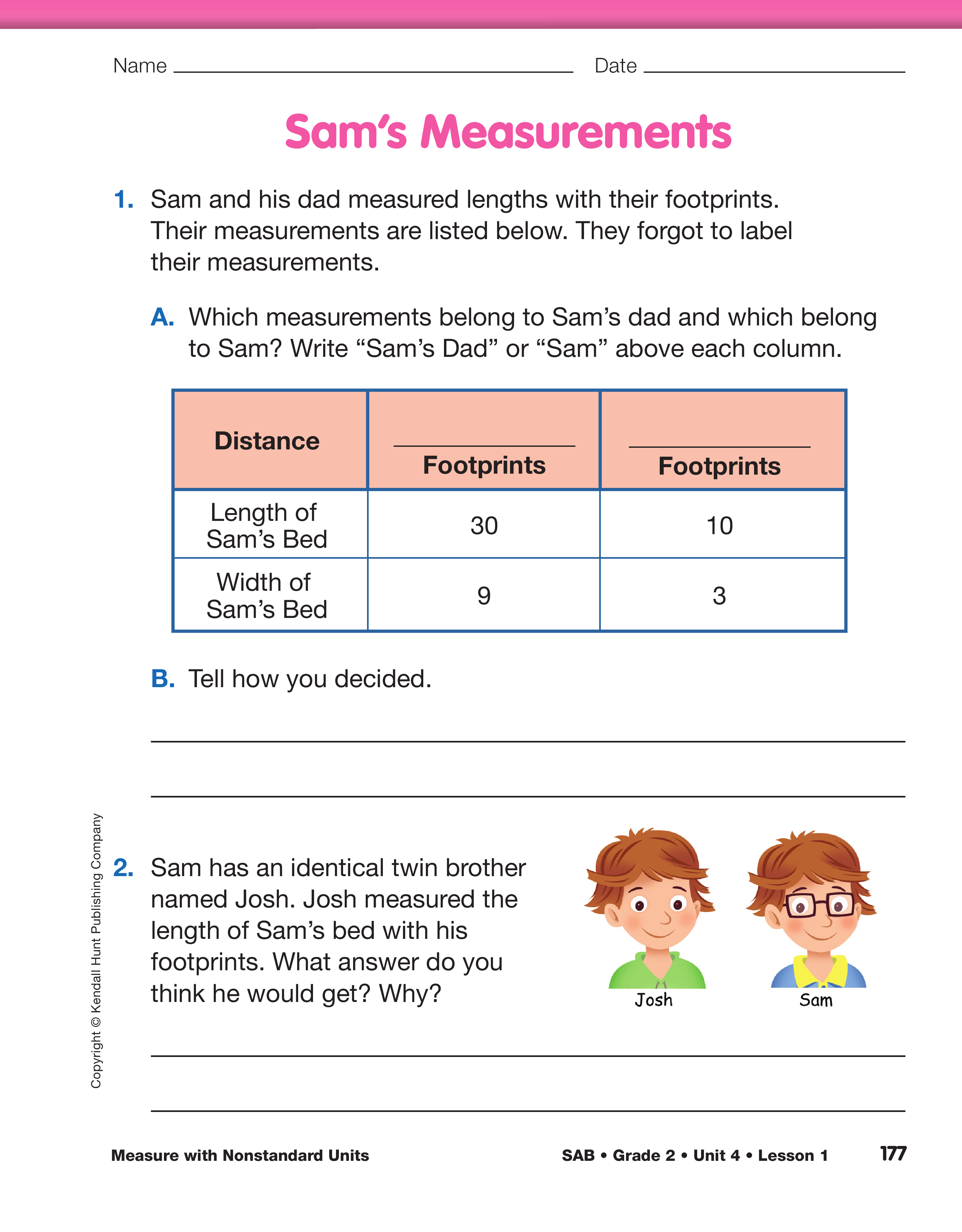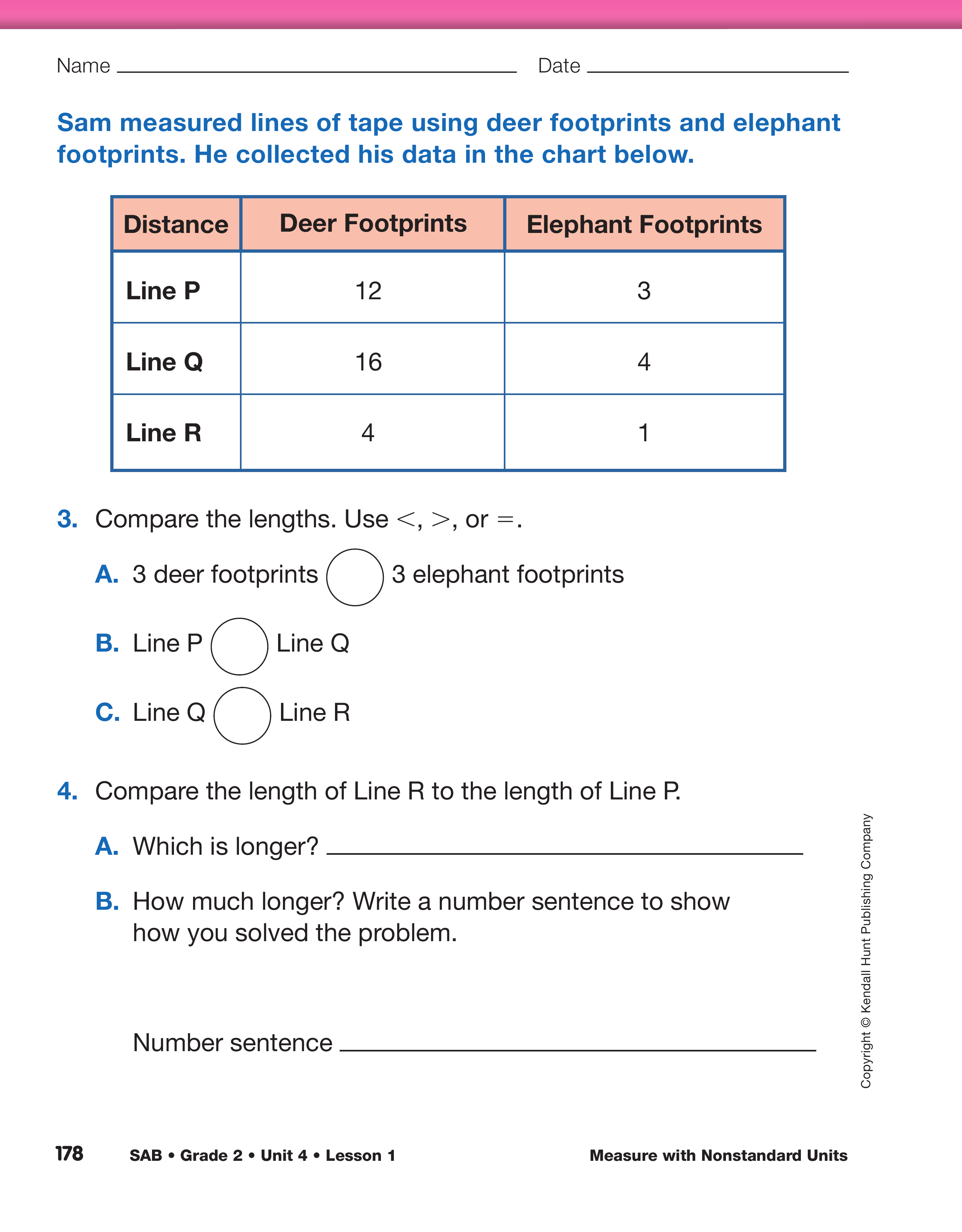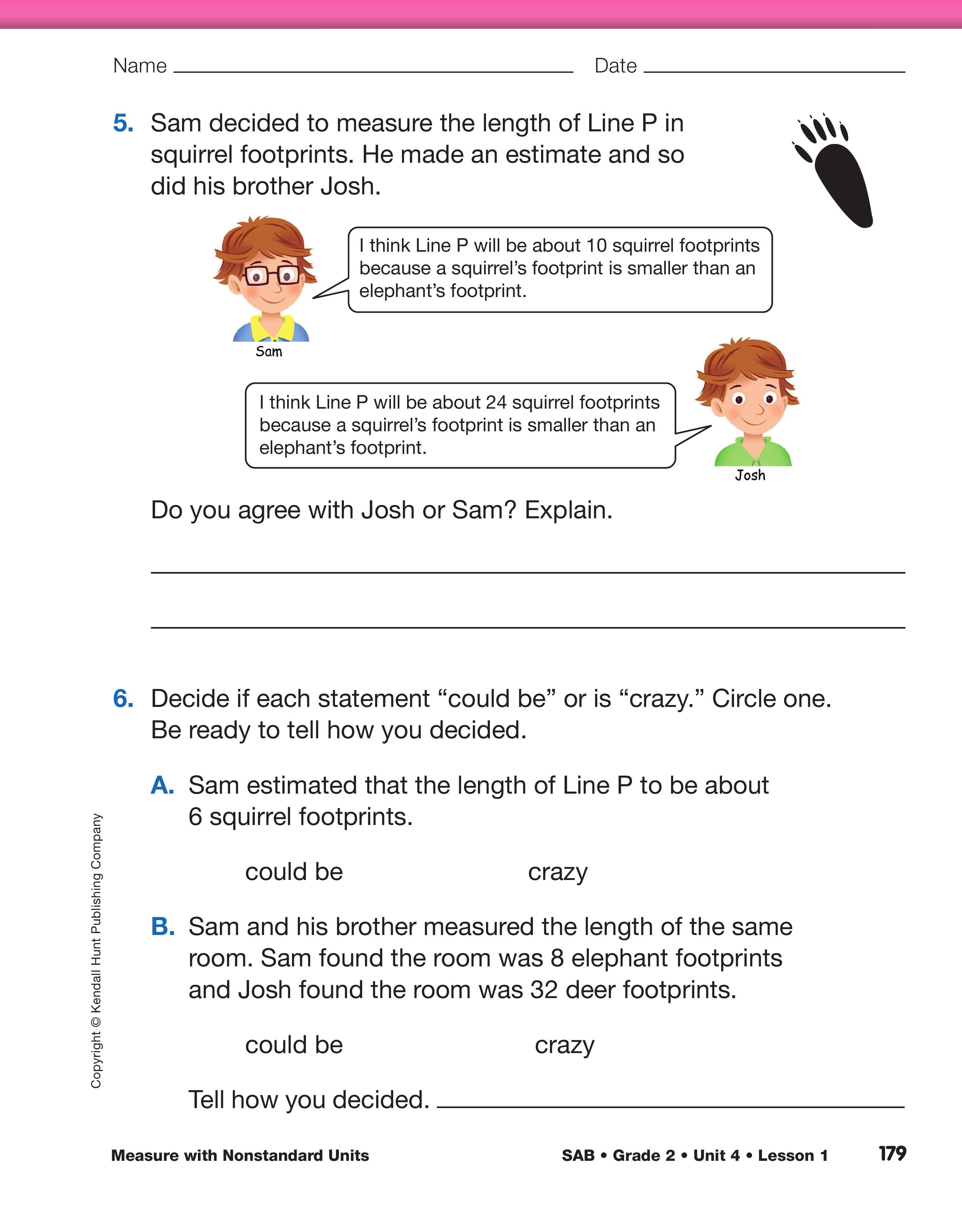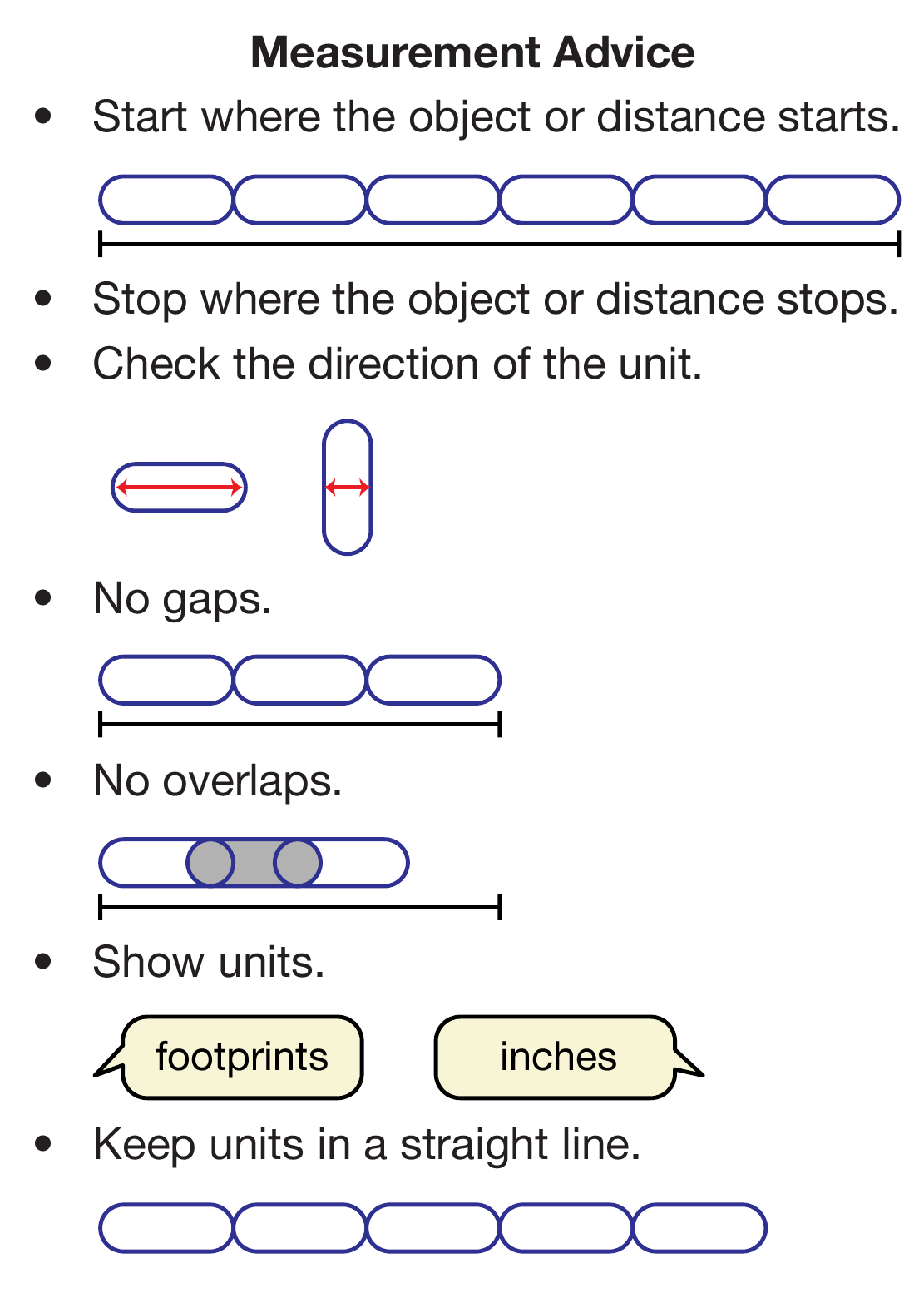Display a palm unit, a gorilla palm unit, a footprint
unit, and an Apatosaurus footprint unit.
- When you changed the unit of measure, does the
object's length change? (no)
- Why are palms and feet good measuring tools? (Possible responses: Most people have
hands/feet; they can be placed end to end; I am
familiar with the size of the unit.)
- Why are palms and feet problematic to use as a
measuring tool? (Possible responses: Palms and
feet are not all the same size; not everyone
knows the size of "my" palms and feet; one person
does not know the size just by naming it.)
- What if I said the length of a line is 5? What would
you say? (I don't know how long that is because
you didn't tell me the unit.)
Refer to the Measurement Advice chart once again.
Review each piece of advice and clarify or add a picture
if needed. Also add any additional advice students
would like to add. See Figure 9.
Ask students to work with a partner to discuss and
complete the Sam's Measurement pages in the
Student Activity Book.
Use Sam's Measurement page with the Feedback Box in the
Student Activity Book to assess students' abilities to use
words and symbols to show comparisons [E1]; use and
apply place value to compare and order lengths [E2]; solve
word problems involving length [E3]; recognize that the
measure of a length is dependent on the size of the unit [E4];
estimate length using nonstandard units [E5]; show work
[MPE5]; and use labels [MPE6].

















